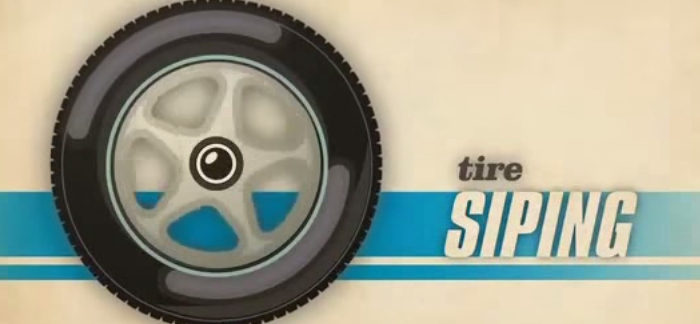When the snow flies, it is important for the tires of a vehicle to have traction. That’s what tire siping is designed to do. Tire siping occurs when small slits are placed in the tread of a tire at 90 degree angles. With thousands of sipes in place, the tires are able to grip along the edges so that there is more contact with the road. It isn’t just snow traction that is improved with tire siping. Hydroplaning is reduced and so is the heat that can quickly rob a tire of its traction over time.
Here are some of the additional pros and cons of tire siping.
You Get Improved Braking Power
The most braking power occurs just prior to losing traction. By siping the tires, the window of braking is extended because more traction can be obtained. This means you’ll have more time in your vehicle to make use of the the maximum braking power that can be achieved. When combined with tread blocks, siping provides more overall gripping edges and that helps the tires hug the road.
It May Increase Tire Chunking
If your tires have a large, raised amount of tread that has undergone siping, then there is a good chance that the tires will chip and chunk away at the edges of that traction in a shorter amount of time. All tires will do this, whether they have siping or not, but the siping seems to occur more quickly. Because the tread is in more contact with the road, the traction goes through extra stress.
Icy Roads Are Easier to Navigate
Even if you have to throw some chains onto your vehicle to get where you’re going, the tire siping can help you get more traction so that it is easier to navigate those roads. What is important is to make sure that siping is performed at correct intervals, which for most tires is 0.25 inches apart from each cut. Cutting too closely can damage the tire excessively and cuts that are too far apart may not provide any additional benefits.
Tire Manufacturers Don’t Do Siping
The major issue with tire siping is that you won’t get tires straight from the manufacturer that have this procedure completed. You will need to have a tire seller or installer do the siping work for you. That means you don’t necessarily have a guarantee of quality for the tire.
It Can Be Done On Any Tire
Even if you’ve worn the tread down by 50% on your current tires, you can still have tire siping done. It actually improves tires that have seen some life because it improves the gripping power of that tire and can reduce the amount of entropy that the heat of the road creates with the rubber. In return, you get an extended life and better traction on a low traction tire.
Warmer Climates May Not Benefit
Tire siping provides an extra measure of traction, but warmer climates that don’t see slick roads often may not benefit much from the cost of having this done. The closer you live to the equator, then the more likely it is that you will not see as many benefits.




